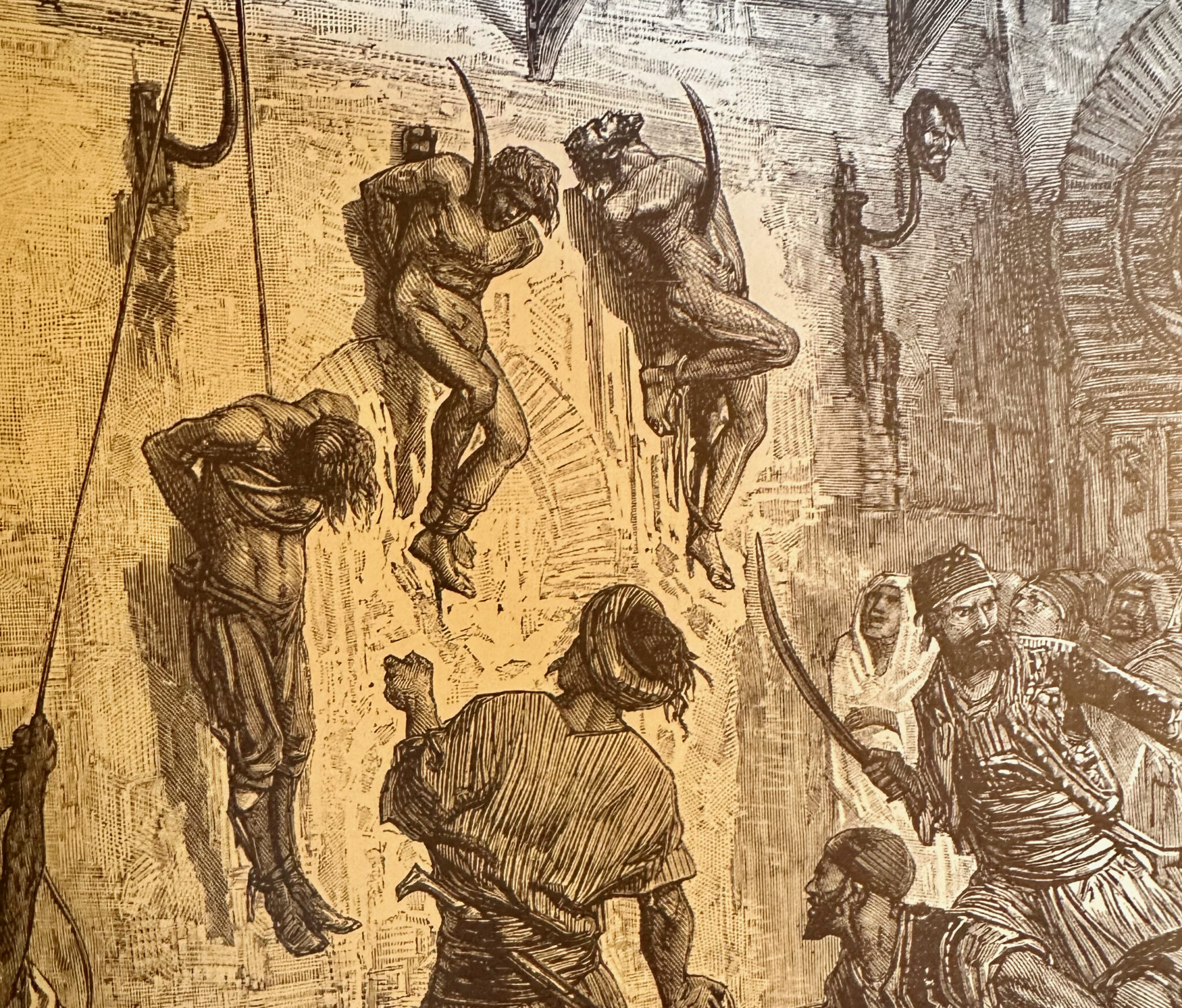
Unveiling the Dark Shadows of Justice: Torture and Execution in Medieval and Renaissance France
by Christy Destremau
Venture with me into the shadows of French history, where justice was often brutal and punishment was unforgiving. In the heart of medieval and Renaissance France, the methods of torture and execution were shrouded in darkness, leaving a legacy that haunts the pages of time and, for the most part, is still kept under wraps. It’s a side of French history no one likes to talk about, and for good reason. Women and even children were not spared from the horrors of torture and execution, their cries echoing through the streets as they faced unimaginable suffering. Let us delve into the harrowing tales of those who faced the horrors of the judicial system in France during this tumultuous period.
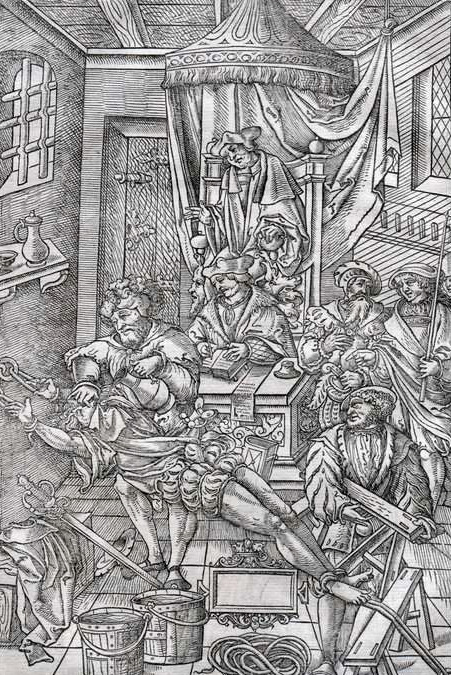 Preparation for Torture and Execution
Preparation for Torture and Execution
Imagine the scene: a prisoner, shackled, bound, and deprived of sleep and sustenance, locked away in a closet in pure darkness, awaiting their fate. In medieval and Renaissance France, those accused of crimes were subjected to meticulous preparations before facing torture and execution. The process was designed to instill fear and extract confessions, often through barbaric means. Confessions of what, you wonder? Many were tortured simply for refusing to repent for their lack of religious faith.
Torture was not merely a means of extracting confessions but a form of public punishment designed to strike fear into the hearts of the people. Prisoners were stripped of their dignity, isolated in dank cells, and deprived of food and water to weaken their resolve. Interrogators would often use psychological tactics and torment to break the spirits of these unfortunate souls before physical agony even commenced. While the ecclesiastical tribunal could resort to torture to obtain a confession of fault, a cleric had no right to push prisoners to the point of shedding blood. In all cases, bloodshed was not necessary to impose suffering. There were already plenty of gruesome torture devices to extract a confession and punish.
Prisoners were assigned cells based on social class. The poor were locked away in underground closets in pure darkness with only enough space to sit and often with rats crawling over them. Nobles were treated to more luxurious cells, think primitive wooden crates or cages, with light and ample room to move and stand, and their cells were often equipped with a small table for eating and writing.
Instruments of Torture
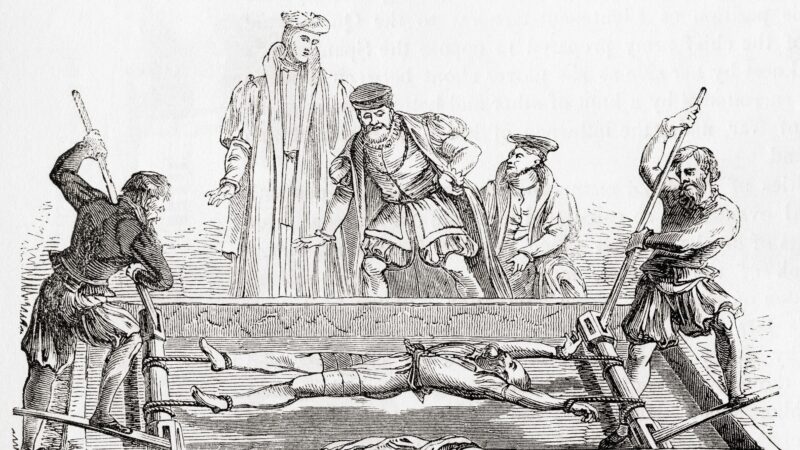 The preferred instruments of torture included were creative and designed to maximize pain without drawing blood. The “rack” stretched the body to its limits, and the scalding hot iron left permanent scars as a mark of guilt. The “human wheel” (the execution wheel) was a torture method used for public execution by breaking the bones of the suspect.
The preferred instruments of torture included were creative and designed to maximize pain without drawing blood. The “rack” stretched the body to its limits, and the scalding hot iron left permanent scars as a mark of guilt. The “human wheel” (the execution wheel) was a torture method used for public execution by breaking the bones of the suspect.
The “water cure,” also known in modern times as waterboarding or controlled drowning, involved securely attaching the suspect to a frame or a trestle and forcing him or her to swallow 2.5 liters of water through a pierced wooden horn while pinching the tortured’s nose shut.
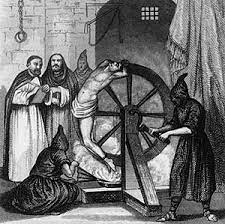 Employing the “boots” consisted of placing the suspect seated and his or her hands tied, with two boards on either side of his or her legs and tied with ropes. The two legs were then tightly tied together with similar ropes. The boards go from the knees to the ankles. The torturer drove wedges of wood using a mallet between the boards located inside the suspect’s legs from above and below. The end goal was to crush the leg bones, causing terrible pain. And if that wasn’t enough, the suspect, usually near death following torture, was (in the Loire Valley) then delivered to an “oubliette,” a bottomless hole in the ground with a wrought iron closure where the suspect once dead was washed away by the river waters below.
Employing the “boots” consisted of placing the suspect seated and his or her hands tied, with two boards on either side of his or her legs and tied with ropes. The two legs were then tightly tied together with similar ropes. The boards go from the knees to the ankles. The torturer drove wedges of wood using a mallet between the boards located inside the suspect’s legs from above and below. The end goal was to crush the leg bones, causing terrible pain. And if that wasn’t enough, the suspect, usually near death following torture, was (in the Loire Valley) then delivered to an “oubliette,” a bottomless hole in the ground with a wrought iron closure where the suspect once dead was washed away by the river waters below.
Victims of Torture and Execution
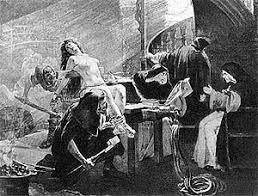
Contrary to popular belief, torture and execution were not limited to men in medieval France. Women and even children were also subjected to these horrific practices. Accusations of witchcraft, heresy, or treason could condemn individuals of any age or gender to a gruesome fate. Women accused of witchcraft faced fierce forms of torture, such as the infamous “swimming test,” where the accused was thrown into the water to determine their guilt or innocence.
Evolution of the Judicial System
With the dawn of the French Renaissance, a new era of enlightenment and reform began to take root in France. The excesses of the medieval justice system’s use of brute force and superstition were gradually replaced by more humane and rational principles. The ideals of humanism and rational thought started to influence legal practices. The use of torture as a means of extracting confessions began to decline, replaced by a more systematic and evidence-based approach to trials.
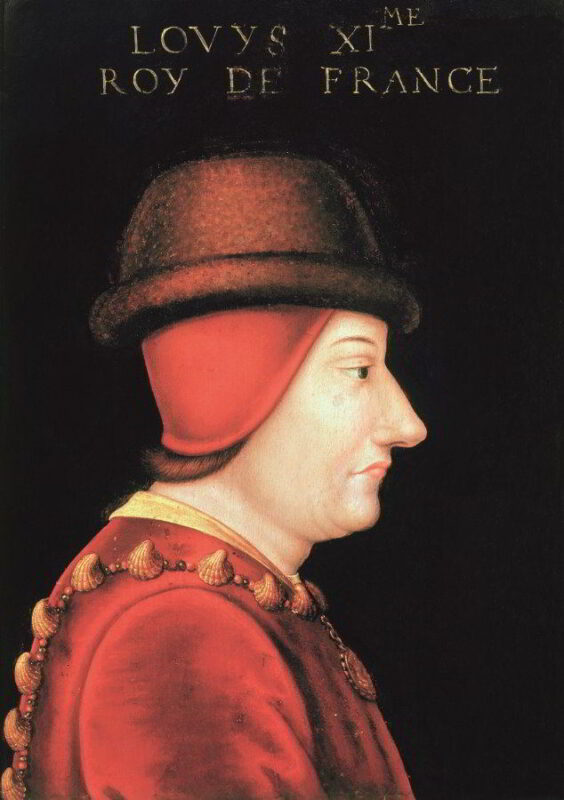 French King Louis XI (1461-1483), known as the “Spider King,” played a pivotal role in laying the foundation for a more structured judicial system, where trials were conducted with greater fairness and transparency. A misunderstood king, Louis XI was indeed cruel with his creation of prison cages and public executions. His obsession with conspiracies against him and fear of dying led to the implementation of the ordinance of 1467 known as the “Ordonnance des Bannières,” designed to fight against the bold, anyone conspiring against him. He required his subjects to denounce one another, and they were rewarded for doing so. He assigned Saint Michel as protector of the French Kingdom and, from it, created the order of chivalry in 1469. But despite his judicially vigorous behavior, he was also the first king to officially be titled the “Very Christian King” and was very attentive to the education of his children (see my post about his eldest surviving daughter, Anne de France) inferring that beneath his hardened exterior also breathed a soft-hearted man? Yes, I leave that a question for readers to draw their own conclusions.
French King Louis XI (1461-1483), known as the “Spider King,” played a pivotal role in laying the foundation for a more structured judicial system, where trials were conducted with greater fairness and transparency. A misunderstood king, Louis XI was indeed cruel with his creation of prison cages and public executions. His obsession with conspiracies against him and fear of dying led to the implementation of the ordinance of 1467 known as the “Ordonnance des Bannières,” designed to fight against the bold, anyone conspiring against him. He required his subjects to denounce one another, and they were rewarded for doing so. He assigned Saint Michel as protector of the French Kingdom and, from it, created the order of chivalry in 1469. But despite his judicially vigorous behavior, he was also the first king to officially be titled the “Very Christian King” and was very attentive to the education of his children (see my post about his eldest surviving daughter, Anne de France) inferring that beneath his hardened exterior also breathed a soft-hearted man? Yes, I leave that a question for readers to draw their own conclusions.
Thanks to his strategic mind and cunning tactics, Louis XI’s reforms aimed to centralize power and establish a more efficient legal apparatus. This misunderstood king laid the groundwork for a more organized and effective justice system by consolidating authority and standardizing legal procedures. The French Renaissance’s arrival a few years after his death brought about a renaissance of justice, as legal scholars and thinkers advocated for fairer treatment of the accused and the abolition of cruel and unusual punishments. The emergence of a more sophisticated legal system marked a turning point in the history of French jurisprudence, paving the way for greater respect for human rights and dignity.
As we reflect on the unspoken dark chapters of France’s past, let us remember the resilience of those who suffered under the weight of injustice. To truly understand the complexities of medieval and Renaissance France, one must explore beyond the expected to where history comes alive in the most unexpected ways.
France Off the Beaten Path Tours offers a unique opportunity to experience a side of French history few share and where these harrowing events unfolded. Join us on a small group tour in the Loire Valley and uncover the secrets of a bygone era, where the echoes of the past still resonate in the present.
- Check out our 2025 Schedule of Tours – Click here to view 2025 tour dates
- Contact us at christy@traveloffthebeatenpath.com to request space availability and/or ask questions.
- Check out our LIMITED EDITION TOURS to Egypt, Champagne, and Normandy here!



